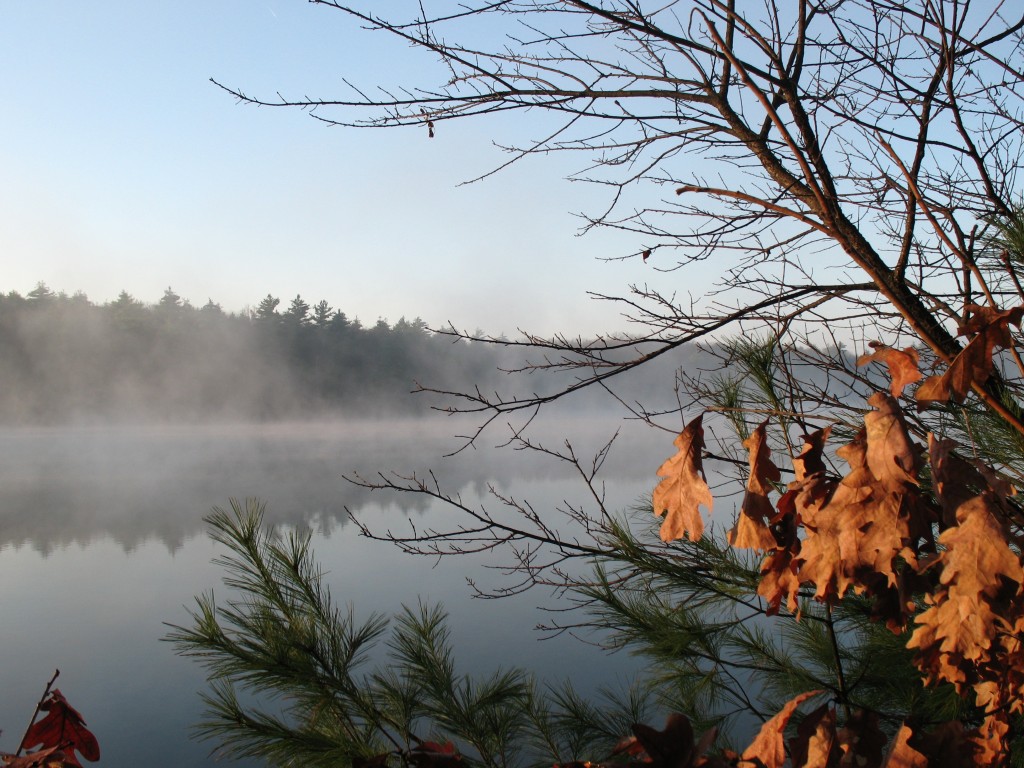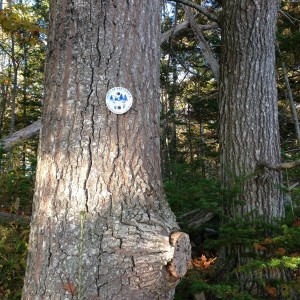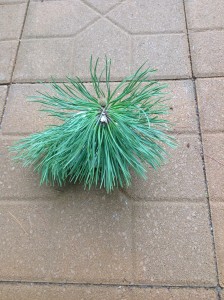Got a white spruce for a Christmas-tree for the town out of the spruce swamp opposite J. Farmer’s. It is remarkable how few inhabitants of Concord can tell a spruce from a fir, and probably not two a white from a black spruce, unless they are together…How slender his [the villager’s] relation to the spruce tree! Thoreau, Journal, 12/22/53
In the town hall this evening, my white spruce tree, one of the small ones in the swamp, hardly a quarter the size of the largest, looked double its size, and its top had been cut off for want of room. It was lit with candles, but the starlit sky is far more splendid to-night than an saloon. Thoreau, Journal, 12/24/53
As a boy, I saw the arrival of our Christmas tree as a great event. It signaled a nearness that lit the nondescript (as I saw them) gray days of early December, when my trudge home from school exhausted what was left of the daylight. It was the stockpile of wrapped boxes around the tree that excited me, really; no religious fervor swept through out secular household. The nearest church was a half-mile walk away, and we didn’t make that walk in any season. But the season seized us all.
We bought our tree from a used car lot that gave up on autos after Thanksgiving. My father spent long (too long, I thought) minutes combing the lot for “the tree,” standing them on end, having me reach in through the prickles and hold the trunk upright, while he stepped back and did an appraising 360 of it. “This one’s good, dad,” I’d say, and he’d reply, “Set it down. Let’s look at that one over there.”
That changed when I turned eleven. That year, my parents, after much hemming and hawing, bought an old, wood-heated, unplumbed farmhouse in midstate New Hampshire. Some years and much work down the road, it was to be their retirement home, when they left the school that housed us. Across the road from the house was a deeply-furrowed, failed potato field. That summer, my father announced that that field would, some years future, fund my brother’s and my college tuition. “With potatoes, dad?” I asked.
Not with spuds, it turned out. Instead, during three hot days, we four planted 1,000 balsam fir seedlings, and, as we watered them against summer drought, we waited for them to grow. Each year, while we waited, we thrashed about our new woodlands, selecting a “wild” tree for Christmas.
That wait stretched over some years: college tuitions rose faster than the trees, and it wasn’t until I was a junior that we were able to sell some to the local Lions Club, which, in turn sold them in town. The few hundreds of dollars realized helped buy some gifts, and then, suddenly, the remaining trees were too tall.
As a new-fledged adult, or no-longer-kid, I still drove north each December, and, along the field’s fringe found a tree to cut, haul and decorate. At some point as I hovered near actual adulthood, I decided I would have one last tree and then stop cutting them. (Now, for example, we string lights on our Christmas driftwood, a pale pine branch stripped of all its bark and delivered by the sea, but with its fine fingers intact.)
For this final tree, I looked up and thought, why not a treetop, with its symmetry and leader-finger pointing at the sky? Later that day, small bucksaw in hand, I climbed a 25-foot balsam (yes, one that had been a 6-inch slip in that long-ago July field) and figured on taking its top 8 feet. It was a bit of a struggle past the thick branches, and I had trouble staying close enough to the trunk to climb, but eventually I got there. This top will look good lit, I thought, and I set to sawing, holding on with one hand, cutting with the other.
As many will attest, the crown of a balsam fir is…well…its crown, and, as I completed my cut, I made sure to get a grip on the top 8 feet so they wouldn’t pitch over and land crown first, thereby fracturing and ruining the crown effect. (Perhaps you can spot trouble on the way.)
I finished my cut, lifted the 8-foot section up and tossed it out so its butt would fall first. Then, I looked at my hands: one held the saw, the other held nothing.
Like Wily Coyote, I had time to register that there was a problem; then I looked down. I grabbed for the tree, but already I was falling back. Even as I picked up speed, I had time to think, Wow, this is Darwin-worthy, or, if I wanted mythic, How Icarian. Then I hit the earth.
Post-descent note: an early 6-inch snow had arrived a day before, and so my landing was cushioned; also I hit a flat, mossy patch of ground, had only my breath knocked from me. I lay there looking up; the tree looked down. Since then, I’ve kept to the ground and every holiday “tree” has been a foundling.








